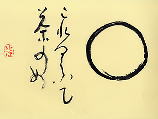|
|||||||
Invitation to an Enso
|
|||||||
| Happy new year, friends ! My first prayer of this year is to wish you an 'Enso' , because I think the world needs it more than any time in the past. I asked my friend Mr. Terry Welch to write an article about his Sanctuary. He lives in Woodinville, Washington. His garden there is world-famous. Enjoy his Sanctuary, and pass through his Moon Gate. Then, I believe, you will feel you are purified and you are in the heart of an Enso. |
|||||||
|
THE WELCH SANCTUARY I lived at Ryokan Yoyokaku in 1971, teaching conversational English to some of Mr. O’Kochi’s friends. While there, I became interested in Japanese culture with a particular fascination in Japanese gardens. Upon returning home in 1972 I began a business devoted to Japanese garden esthetic. I started a bonsai collection that now numbers to over one hundred specimens. With my father in 1975, I purchased a thirty acre parcel of land in the country with the express purpose of fusing 18th
Century English “naturalistic” garden design with Japanese elements. Sometime
later, in 1993, while completing a tsukimi (moon-viewing temple) I made the
discovery that the name of the local indigenous people who had lived in the
region for several thousand years: the Snoqualmie, means “children of
the moon.” After that point, I began to fuse Snoqualmie mythology into the
garden as well. The garden is located in the center of 24 acres of mixed
woodland within an inventoried class II
wetland. There are two ponds created by beavers, which happen to be the totem
of the Snoqualmie people. The garden contains a Zen garden; Moon viewing
temple, Beaver gate involving two house posts carved of cedar, a walk through
the forest, An alpine garden devoted to the memory of the Snoqualmie approached
through a Moon gate; and a walled garden housing the bonsai collection. |
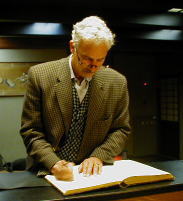 Terry Welch |
||||||
|
THE ZEN GARDEN When I stayed at Yoyokaku over thirty years ago I was struck by the
beauty of its garden. I love pines and I watched gardeners taking exquisite
care of the grove. Little did I know at the time the garden used as its
inspiration the Niji-no-Matsubara pine forest which runs for several kilometers
between the fishing village of Hamasaki and Higashi-Karatsu. Many Zen gardens
in Japan have specific geographic connections. So when I laid my rock garden
out, I wanted to single out the two mountain ranges of Western Washington,
The Cascades and the Olympics. The flat gravel area signifying water was
meant to symbolize Puget Sound. In the larger sense, the scene is meant
to capture the reality of the planet Earth seen from outer space: We are
a planet, with an outer core made up of mountains and water: yin and yang,
the classic polarity. |
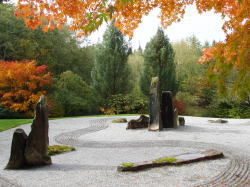 Zen Garden |
||||||
|
TSUKIMI (moon-viewing temple) In selecting a structure to use as a moon-viewing temple, I found
an elaborate wooden altar in the town of Kudus in eastern Java. Over one
hundred years old and made of teak, we had to engineer a roof and verandas
in order to make it useful. It is located deep within the wetland, and
besides using it for moon viewing it is the perfect place to experience
wildlife. From its vantage point we are able to see beavers, bull frogs,
muskrats, otters, Great Blue herons, Eagles, Owls, Osprey, Dragonflies
and many species of duck and song birds. The approach to the structure
uses the roji as its inspiration. The roji is the garden associated with
the teahouse. Generally comprised of stepstones approximating a mountain path.
Moving slowly along the path, the overriding feeling is one of tranquility,
putting the mind and spirit at rest before arriving at the structure. |
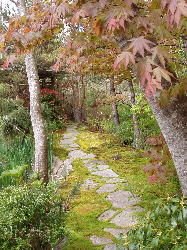 Roji and Tsukimi |
||||||
|
THE BEAVER GATE Beavers were the totem selected by the Snoqualmie people. Sometime
after the last clearcut on the land in the 1940’s the beavers dammed up
two small lakes. The Snoqualmie felt that the beavers were the most human-like
of all animals since they did three things the same as humans. First, they
used water as a means of getting around, just as the Snoqualmie used cedar
dugout canoes to go back and forth on the Snoqualmie River. Second, they
lived in lodges. And thirdly, they harvested wood as building materials.
In respect to the spirit of the beaver, who still live in the garden, we
erected a “Beaver Gate” using two house posts carved by the well-known
non-Native American carver, Duane Pasco. |
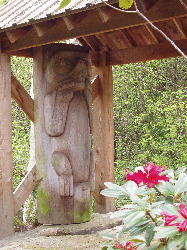 Beaver Gate |
||||||
|
THE PLUNGE POOL: Tribute to the Snoqualmie people. I designed a garden as a tribute to the Snoqualmie people. They are known
for a world-class waterfall twenty miles from the Sanctuary. In this metaphor,
I designed a Moon gate (representing China) that one passes through on
their way to the waterfall. Just off to the right is a large lace-leaf
Japanese maple that my grandfather originally gave my aunt on her wedding
day in 1946. When she died, her children gave it to me. It represents Japan.
Soon one comes upon the pool (representing the Pacific Ocean), and in the
distance we see the waterfall, the home of the Snoqualmie. A bird’s eye
view of this garden suggests that the Snoqualmie people are looking across
the ocean at their “roots” or ancestors in Asia, and that everyone is
unified in the appreciation of the “moon,” not only through passing through
the moon gate but in it’s parallel interpretation as the enso, signifying
cosmic unity.
|
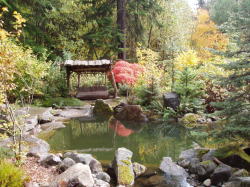 Plunge Pool 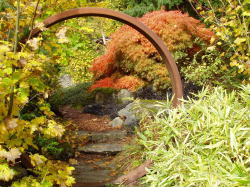 Moon Gate |
||||||
|
THE BONSAI GARDEN The walled garden near the house contains the bonsai collection of
over one hundred trees. I entered horticulture over thirty years ago by
developing a collection of bonsai. By having them near me, I learned how
to care for them. I arranged them on the benches in pleasing patterns that
I later transferred to landscape plans in the gardens we designed. They
are my children, and just like children they will survive me. I am already
carrying for over thirty trees that were started by people who are no longer
with us. Just as I have discovered through living in the Sanctuary: it
is not about owning things; it is all about stewardship. Nothing
truly belongs to us. It is upon all of us to be the very best caregivers we can be!!!! |
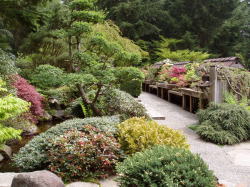 Bonsai Garden |
||||||
|
|
|||||||
| Please enjoy more photos of Terry's Sanctuary. |
|||||||
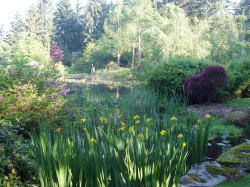 |
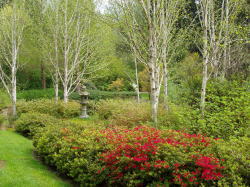 |
||||||
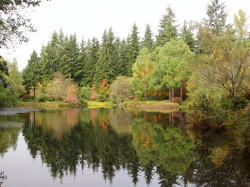 |
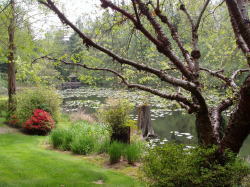 |
||||||
t. r. welch's essay on Yoyokaku Garden |
|||||||
|
|||||||
